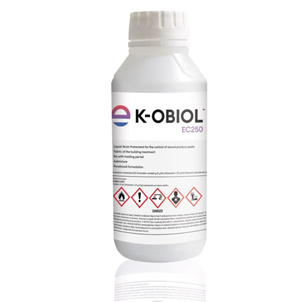Protecting Harvests with Integrated Pest Management
How IPM can safeguard profit against the risk of stored grain pests
Stored grain pests present a significant threat to the quality and marketability of harvested crops. Insects such as the Grain Weevil can silently infest stored grain, leading to contamination, reduced value, and substantial financial losses.
A well-planned Integrated Pest Management (IPM) strategy can make all the difference to the safe storage of crops, and it starts with taking action well before a single grain enters the store. Our Technical Services Manager for Turkey & GCC, Kerem Çelik, discusses the fundamentals of IPM and how it plays an important part in reliable, sustainable strategies for stored grain pest control.
“To create an effective IPM plan, conducting a thorough risk assessment is essential, especially in the case of stored agricultural products,” he states. “Making an action plan based on this risk analysis is key to preventing or eliminating pest infestations effectively.
“Through this process, necessary preventative actions—such as repairing building defects and cleaning requirements inside and outside the facility—can be identified. As a result, pest infestations can largely be eliminated before they even begin.”
Pre-harvest store preparation: The foundation of IPM
IPM provides a proactive program of prevention, monitoring and control strategies to limit pest damage by the most economical means possible and with the least environmental impact. A well-planned IPM strategy for grain stores incorporates good hygiene, monitoring, and control with chemical treatments. Rather than relying solely on pesticides, IPM emphasises prevention and early intervention to deter pests and maintain the quality and value of grain in store, as Kerem explains.
“IPM plays a crucial role in the management of stored grain pests. With multiple control methods used simultaneously, overall pest management becomes more effective. At its core, this approach enables us to address pest damage as quickly, economically, and with as little chemical use as possible. With the preventative measures that form the foundation of IPM, it’s possible to eliminate the pest before the damage escalates—or even before it occurs at all.”
One of the most frequently overlooked elements of the IPM approach is the effective cleaning and maintenance of storage facilities. Kerem highlights “insufficient preventative measures and a lack of risk analysis as the most commonly disregarded practices."
“It is absolutely essential to carry out proper cleaning (sanitation) procedures before placing any grain into storage areas. This is one of the most critical points, because nearly all stored grain pests thrive under storage conditions and do not live in the fields,” he says. “It should also be noted that infestations usually occur due to leftover product residues from the previous years’ harvests, or from insects hiding in cracks and crevices within storage structures.”
“Therefore, the second most important recommendation we can give—along with proper cleaning—is to ensure that any cracks and crevices inside the storage areas are properly repaired before harvests enter the building.”
K-Obiol™ for effective pest control in grain stores
When the IPM strategy calls for the use of an insecticide, Envu offers a choice of products as Kerem explains.
“For the control of stored grain pests, there are two types of residual pesticide applications: treatments applied to the walls and surfaces of empty storage facilities; and those applied directly to the grain itself.
“Products used in such applications—such as K-Obiol™—provide long-lasting residual effectiveness, which reduces the need for frequent treatments throughout the year. At the same time, they offer high efficacy at low doses, helping to minimise the overall chemical load released into the environment.”
Developed with over 40 years of expertise in the market, K-Obiol™ is a liquid insecticide with a pyrethroid formulation containing the active ingredient Deltamethrin. Formulated with ultra-low levels of active ingredient, it is especially suited to the food industry, offering unrivalled efficacy and providing the highest level of protection against all the most common insect pests that threaten stored grain and pulses.
Available in two formulations, K-Obiol™ provides both preventative and curative control. It can be used to treat buildings prior to harvest, and also applied to grain post-harvest— providing long-term residual protection from pest damage for up to 12 months.
Combatting evolving pest behaviours
As the climate changes, warmer temperatures are having an impact on the evolution of pest behaviours with knock on effects for those trying to prevent and control infestations. Kerem observes that rising temperatures and seasonal changes are causing variations such as extended diapause periods, increased reproduction within a single season, and faster development into adulthood, explaining that “the changes are not solely due to rising temperatures, but also the prolonged use of pesticides over time, which can also lead to an adaptation process in pests.”
He concludes: “As IPM is an integrated approach it involves the harmonious use of multiple control methods, making it a highly significant tool now, and for the future, especially in terms of preventing or delaying resistance.
“Through early-stage preventative measures and the application of physical and mechanical control methods, with IPM pest populations can be managed and even prevented before they reach problematic levels.”
Protect grain with all round support from K-Obiol™ and Envu
As part of an IPM strategy, K-Obiol™ will help prevent and control infestations, protecting grain quality and the profits from harvests.
With decades of experience in pest management our products, like K-Obiol™, always lead the way in their respective markets by offering scientifically proven, reliable control.
As with all our products and advanced formulations, K-Obiol™ is backed up by expert advice and access to ongoing customer support, to empower all professionals who need to protect grain with complete solutions for effective, long-term pest control.

